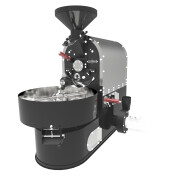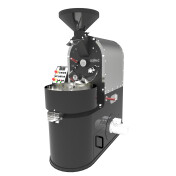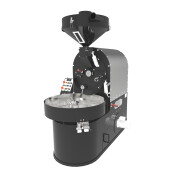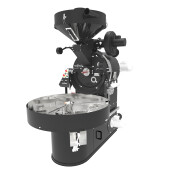
Types and Varieties of Coffee Around the World – A Guide to Popular Coffee Species and Flavors
Coffee is a beloved beverage enjoyed across the globe, with diverse flavors, aromas, and characteristics shaped by different coffee species and growing regions. This guide explores the primary types and varieties of coffee that define the world’s coffee culture and are essential for any coffee enthusiast or professional roaster.
The Main Types of Coffee Beans
There are four main types of coffee beans, each with its own unique flavor profile and growing conditions:
-
Arabica (Coffea Arabica): Arabica beans are the most popular coffee beans worldwide, known for their smooth, mild flavors and slight acidity. Grown primarily in high-altitude regions with cooler climates, Arabica beans are generally more expensive due to their delicate nature and specific growing requirements. They are commonly cultivated in countries like Colombia, Ethiopia, and Brazil.
-
Robusta (Coffea Canephora): Robusta beans are known for their strong, bold flavor and higher caffeine content. Grown at lower altitudes in warmer climates, these beans thrive in places like Vietnam, Indonesia, and Africa. With their earthy, nutty notes and thicker crema, they are popular for espresso blends and instant coffee.
-
Liberica (Coffea Liberica): Liberica beans are native to West Africa but are now mainly grown in Malaysia and the Philippines. Known for their unique, fruity flavor with a hint of floral aroma, Liberica beans are less common and have an unconventional shape and size. They are often enjoyed by those looking for an exotic coffee experience.
-
Excelsa (Coffea Excelsa): Often considered a sub-species of Liberica, Excelsa beans are mainly grown in Southeast Asia. These beans are distinct in flavor, combining tart and fruity notes with a light body. Due to their complexity, they are often used in blends to add depth and enhance other flavors.
The Origins of Coffee – Where It All Begins
The origin of coffee beans plays a huge role in shaping their flavor profiles. Here are some key regions where coffee is cultivated, each offering unique taste characteristics:
-
Central and South America: Known for producing smooth and balanced coffees with mild acidity and flavors of chocolate, caramel, and nuts. Notable countries include Colombia, Brazil, and Costa Rica.
-
Africa: Africa, especially Ethiopia and Kenya, produces coffee with complex fruity and floral notes. Ethiopian coffee, often bright and floral, is considered the birthplace of coffee.
-
Asia: Asia produces earthy, full-bodied coffees, with Indonesia and Vietnam being major players. Sumatra, for example, offers beans with spicy, herbal flavors that are full-bodied and low in acidity.
Coffee Varieties – Exploring Arabica and Robusta Subtypes
Beyond species, there are numerous coffee varieties within Arabica and Robusta that offer distinct characteristics:
-
Typica: One of the oldest and most common Arabica varieties, Typica has smooth, sweet flavors with a balanced acidity, often found in Latin America.
-
Bourbon: Known for its complex flavor profile with notes of chocolate and fruit, Bourbon is widely grown in Africa and Latin America. This variety is loved for its sweetness and full body.
-
Geisha: Originally from Ethiopia, Geisha is now famously grown in Panama and is celebrated for its delicate floral and jasmine-like aroma. Known for its exceptional quality, it’s one of the most expensive coffee varieties.
-
Catimor: A hybrid of Arabica and Robusta, Catimor is known for its resistance to disease. It’s commonly grown in Indonesia and offers a smooth, balanced cup with low acidity.
Unique Coffee Processing Methods and Their Impact on Flavor
Coffee processing also greatly influences the taste of the final cup. Here are the primary methods used:
-
Washed (Wet) Process: Common in Central and South America, this method removes the cherry pulp before drying. The result is a clean, bright flavor that highlights the bean’s natural acidity.
-
Natural (Dry) Process: Often used in Ethiopia and Brazil, beans are dried with the cherry fruit still attached, giving a fruity, bold flavor with a heavier body.
-
Honey Process: A hybrid of the wet and dry methods, the honey process leaves some fruit on the bean, resulting in a sweet, syrupy flavor with balanced acidity.
How to Choose the Right Coffee for Your Taste
Selecting the right coffee is a matter of understanding your taste preferences. If you enjoy a balanced, mild cup, go for a Central American Arabica. For a bolder experience, Robusta or African Arabica will offer depth and complexity. Adventurous coffee drinkers might love the floral notes of Geisha or the fruity profile of naturally processed beans.
Exploring the various types and varieties of coffee beans opens up a world of flavors and aromas. Whether you’re an at-home coffee enthusiast or a professional roaster, understanding these nuances is key to crafting the perfect cup. To elevate your coffee roasting process, check out our range of specialized coffee roasters at Coffedroasters.com, designed to bring out the best in each unique bean.
How do coffee varieties affect the flavour profile and roasting strategy?
Coffee varieties require different approaches to roasting in order to bring out their unique flavour profiles. Roasters are often faced with a choice between mildness and intensity of flavour, which influences decisions about the process in coffee roasting machines. Mild flavour profiles are preferred by those who appreciate subtlety and delicacy in a cup of coffee. On the other hand, intense flavours attract lovers of strong sensations and distinctive aromas. The choice of the right roasting profile depends on consumer expectations and the characteristics of the beans used.
Differences between botanical species: Arabica vs Robusta and more
Arabica as a coffee species is valued for its complex flavour profiles, which include floral, fruity and nutty notes. Robusta, on the other hand, has a more earthy and bitter taste, making it ideal for espresso blends. Arabica has a lower caffeine content than Robusta, which contributes to its more delicate flavour and aroma. Arabica is more demanding to grow due to its sensitivity to disease and climate change, making it less resilient than Robusta. Robusta is more resilient and can be grown at lower altitudes and in more difficult climatic conditions.
Experiment with variety: blends, single origin, coffee hybrids
Coffee blends are often used to create complex flavour profiles that combine the best characteristics of different beans. Single origin coffee, on the other hand, allows you to fully appreciate the unique characteristics of one particular variety of coffee. The choice between a blend and a single origin depends on your taste preferences and the purpose of the tasting – whether it is to explore new flavours or celebrate classic profiles.
Coffee hybrids and new varieties are becoming increasingly popular on the market due to their potential to combine the best characteristics of different species. Experimenting with hybrids can lead to the discovery of new and exciting flavour profiles.






